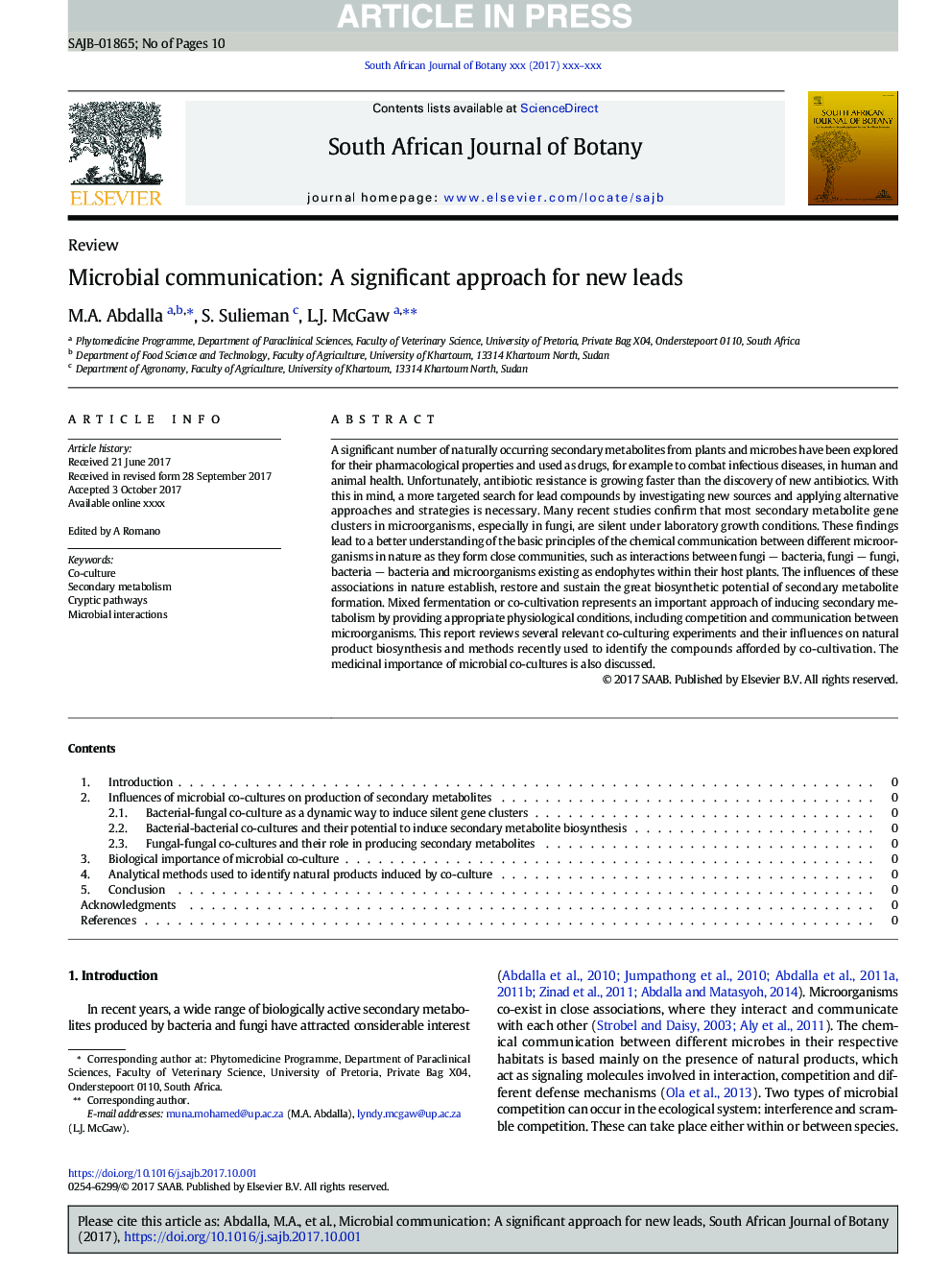| Article ID | Journal | Published Year | Pages | File Type |
|---|---|---|---|---|
| 8882450 | South African Journal of Botany | 2017 | 10 Pages |
Abstract
A significant number of naturally occurring secondary metabolites from plants and microbes have been explored for their pharmacological properties and used as drugs, for example to combat infectious diseases, in human and animal health. Unfortunately, antibiotic resistance is growing faster than the discovery of new antibiotics. With this in mind, a more targeted search for lead compounds by investigating new sources and applying alternative approaches and strategies is necessary. Many recent studies confirm that most secondary metabolite gene clusters in microorganisms, especially in fungi, are silent under laboratory growth conditions. These findings lead to a better understanding of the basic principles of the chemical communication between different microorganisms in nature as they form close communities, such as interactions between fungi â bacteria, fungi â fungi, bacteria â bacteria and microorganisms existing as endophytes within their host plants. The influences of these associations in nature establish, restore and sustain the great biosynthetic potential of secondary metabolite formation. Mixed fermentation or co-cultivation represents an important approach of inducing secondary metabolism by providing appropriate physiological conditions, including competition and communication between microorganisms. This report reviews several relevant co-culturing experiments and their influences on natural product biosynthesis and methods recently used to identify the compounds afforded by co-cultivation. The medicinal importance of microbial co-cultures is also discussed.
Related Topics
Life Sciences
Agricultural and Biological Sciences
Agronomy and Crop Science
Authors
M.A. Abdalla, S. Sulieman, L.J. McGaw,
